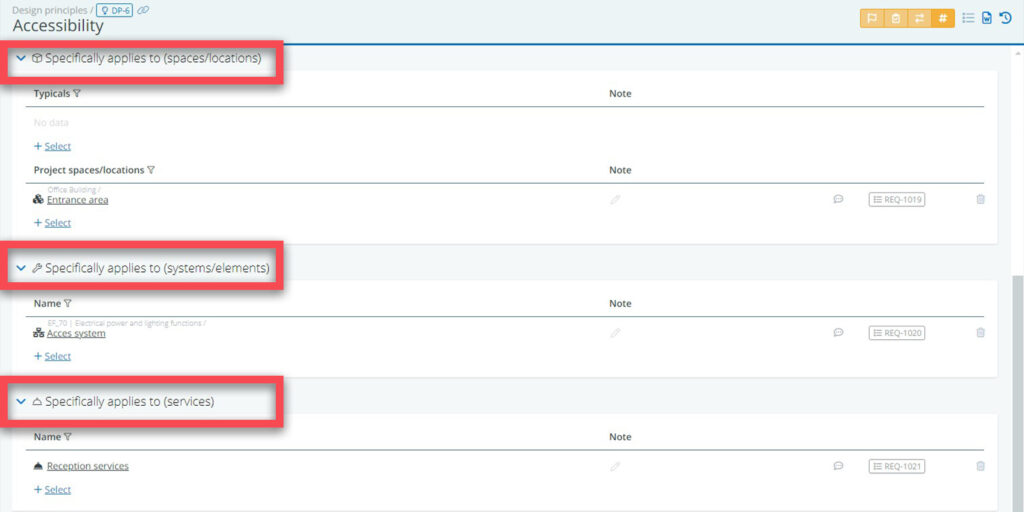The most general, high-level, decomposition that you can make in BriefBuilder is the Objectives / Principles tree.
This breakdown is intended for capturing the project’s overall aims and the underlying ideas—explaining what needs to be achieved with it and what kind of general solutions the client has in mind. It is the type of information that you will normally find in the strategic brief of a project.
In contrast to the rest of the BriefBuilder model, objectives and principles are usually quite abstract: it concerns ‘prose’ rather than explicit requirements. Even so, it is crucial information because objectives and principles give direction to the overall project and they are the basis for all the other, more detailed requirements.
Objectives and principles
In the breakdown, you can make a distinction between objectives and design principles and you can use folders to structure the tree. All three are explained below.
Project objectives
Objectives explain what needs to be accomplished with the project. Ideally, objectives do not focus on the building itself, but on the value that the project has deliver for to the client and the project’s users. Defining clear objectives is important because it gives purpose and direction to the project.
It is not a must, but we recommend to formulate objectives as verbs, thereby clearly indicating that the project has to do something for the client. For example, when building a new office, the project’s objectives could be formulated as follows: to improve staff well-being, to reduce costs, and to enhance collaboration.
Design principles
Design principles are the overall concepts, general ideas or high-level requirements that apply to the project. They typically apply to the project as a whole and not just to a limited number of objects. Just like objectives, design principles tend to be fairly abstract and of textual nature.
Examples include general requirements on topics such as sustainability, maintenance/operation, health and wellness, architectural expression, accessibility, and efficiency or flexibility.
Folders
You can use folders to structure the tree, grouping project objectives and design principles according to category if necessary. If you are using a certain classification system, you can also add classifications to folders.
Creating the structure
To create objectives and principles, go to the Objectives & principles tree via the navigation menu and click on the at the top of the page. This will allow you to create your first object. A window will pop up offering you three options to choose from (discussed above). Just click on one of the options and add a name.
The breakdown of objectives and principles can be quite simple. Most often it is just a list. See below for an simple example (of an office project).
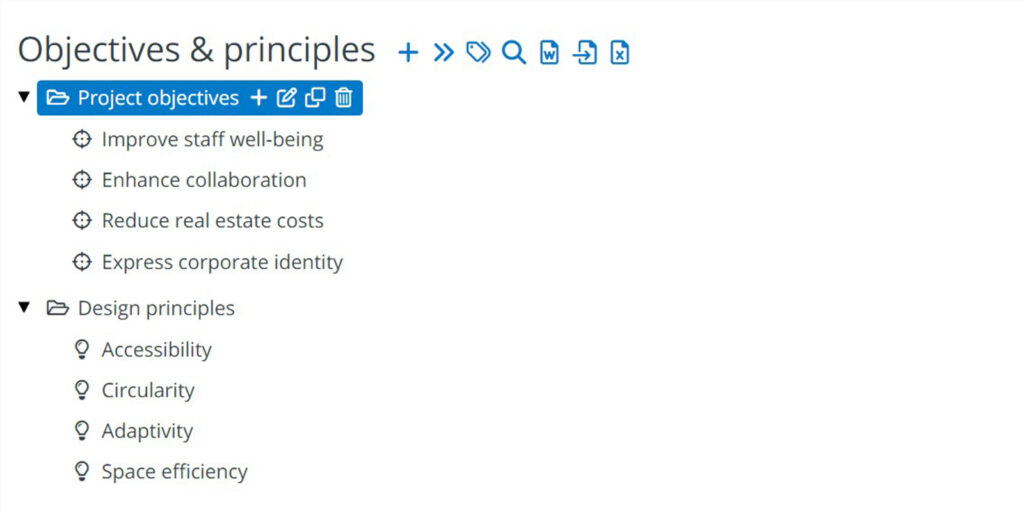
Simple example of a list with objectives and design principles. It concerns general information that applies to the project as a whole
Defining project objectives
To explain the objective, you can use the description field. Typically, it concerns fairly high-level, somewhat ‘fluffy’ texts (at least when compared to the more concrete requirements in the rest of the model). There is no harm in that, but try to keep it simple and to-the-point.
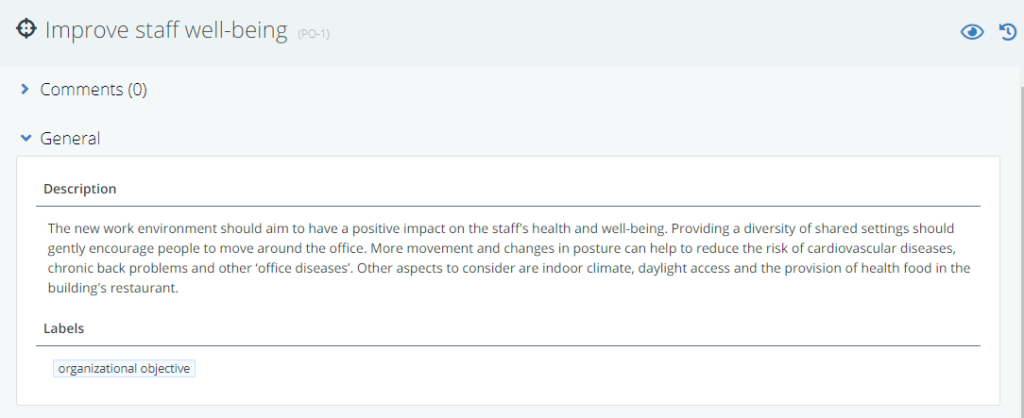
Where possible, the recommendation is to add key performance indicators or specific targets to the objective. This allows you to evaluate whether objectives have been met. You can use the properties for this. See example below.
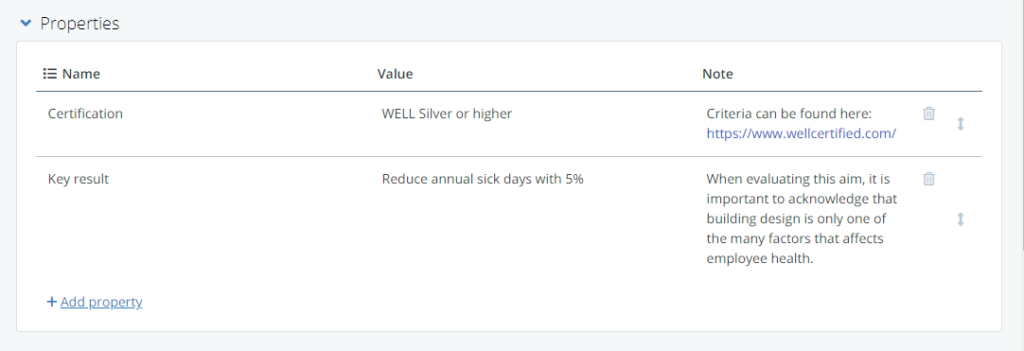
When you have many objectives, you may want to add some kind of categorization by using the labels.
Defining design principles
As said earlier, a design principle is a concept or a general requirement that applies to the project as a whole. Good examples are things like circularity, accessibility or adaptivity.
Again, you can use the description field to explain what is meant with the design principle in question. See example below.
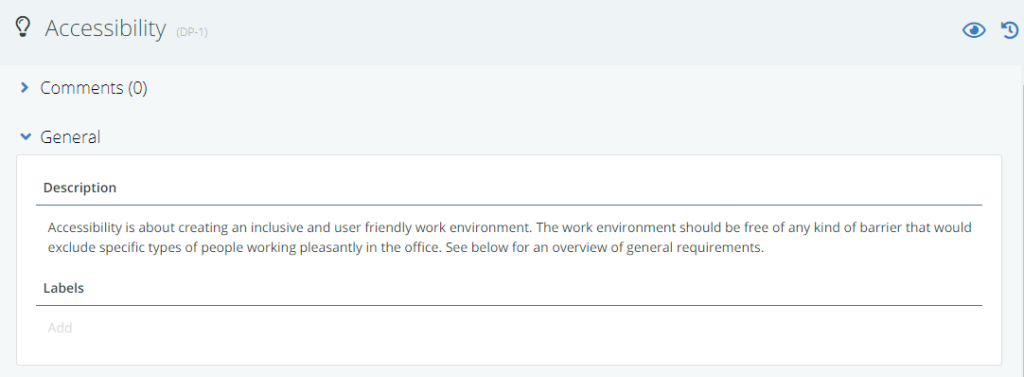
The property section can be used to become more specific about the design principle. Don’t get too detailed however. Detail requirements (e.g. concerning indoor climate or sizes or enclosure) can best be placed at the specific spaces or construction parts to which they apply.
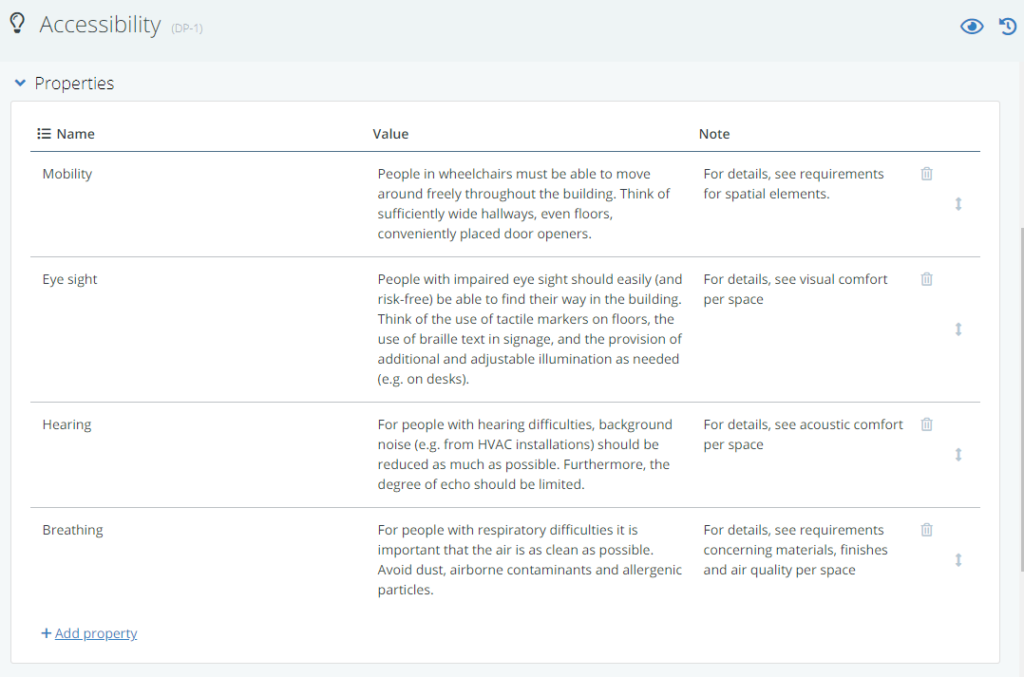
Linking design principles to specific objects
If relevant, you can link design principles to the objects to which they specifically apply.
For example: if you have a design principle called “agile working”, you may want to link that principle to the work spaces in your space tree. In similar fashion, you may want to link a principle like “sustainable design” to specific systems or elements (e.g. PV cells) in your technical tree.
You can make these links in the following tables:
- Specifically applies to (spaces)
- Specifically applies to (systems and elements)
- Specifically applies to (services)
See below for an example in which the design principle accessibility is linked to the entrance area (space), the access system (system) and the reception services (service).
